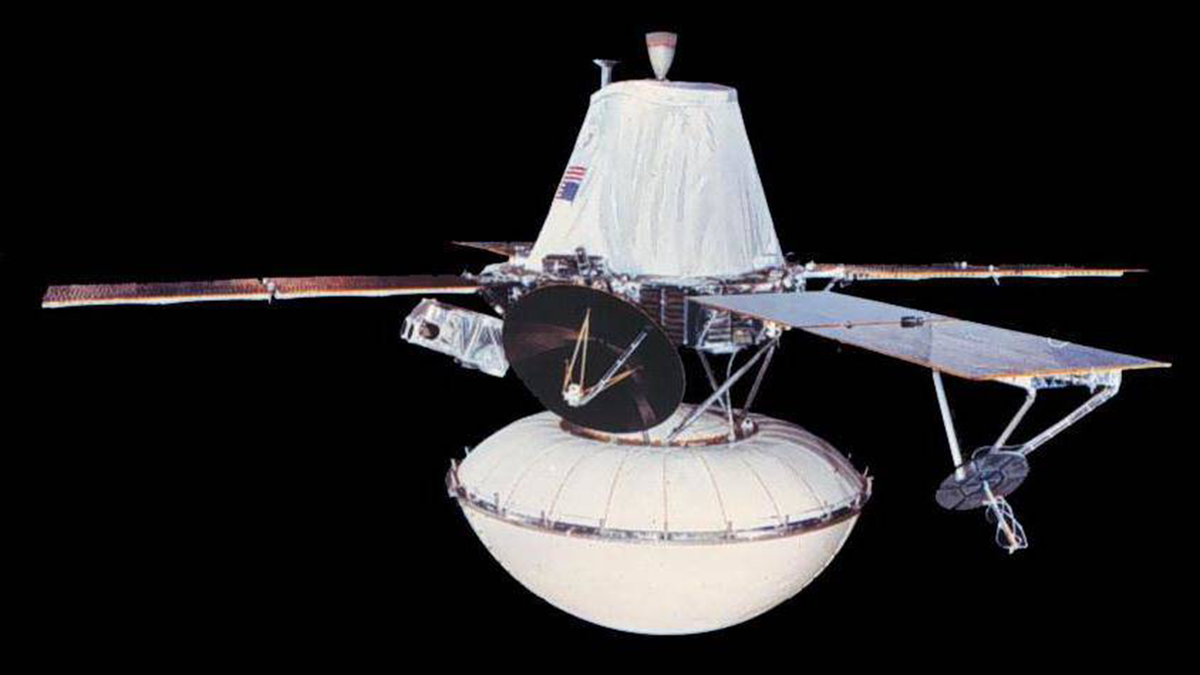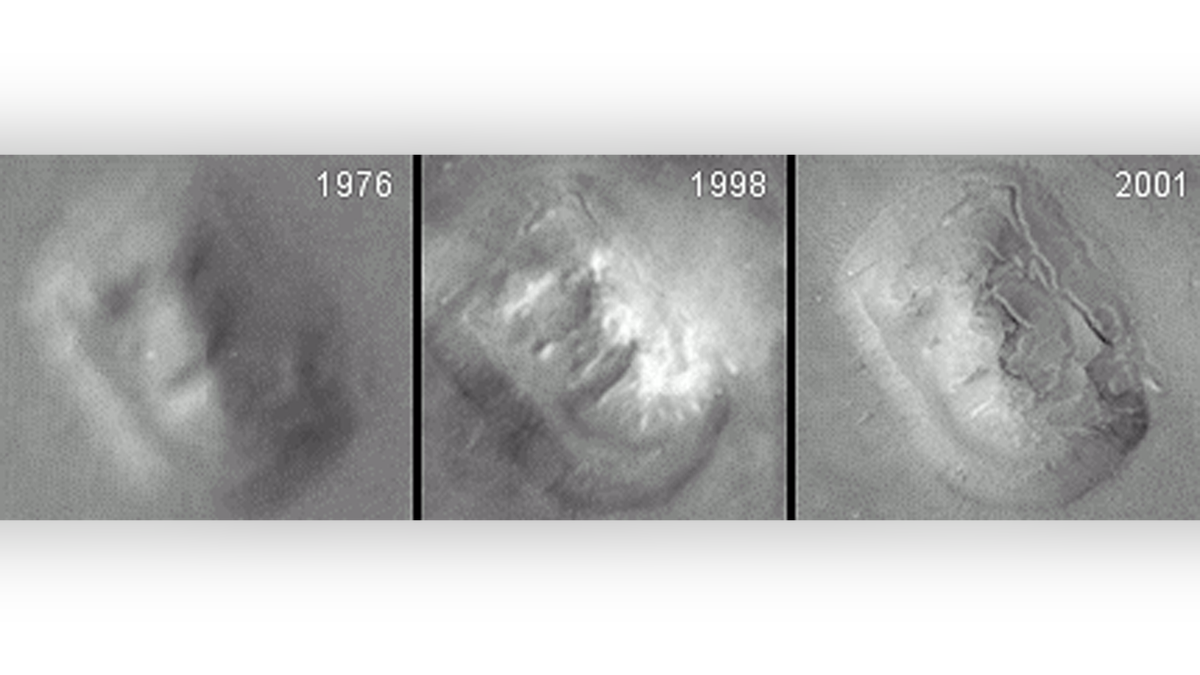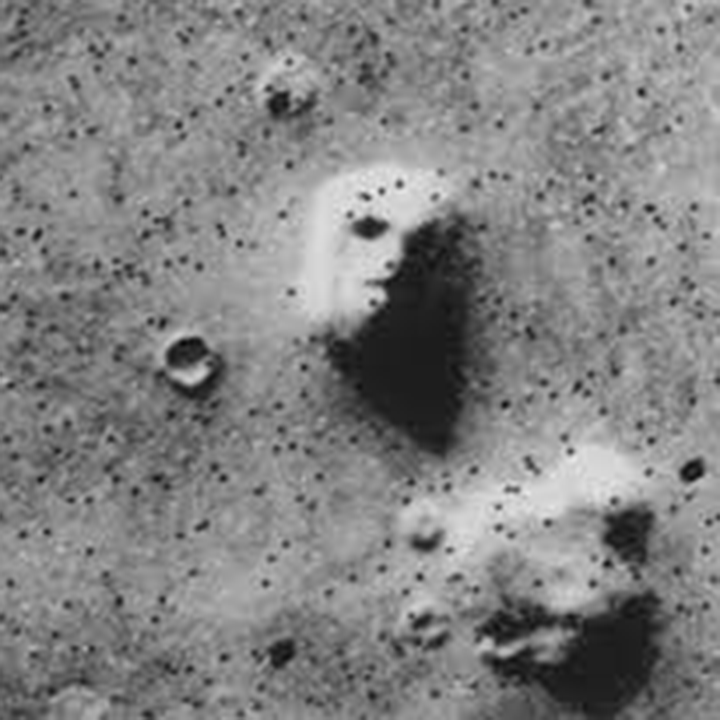A photograph of Mars taken by NASA's Viking 1 spacecraft left people perplexed and wondering about the possibility of extraterrestrial life on this day in history, July 25, 1976.
The image, dubbed “Face on Mars,” appeared to show a carving of eyes, nose and mouth in the Martian region of Cydonia.
“NASA's Viking 1 spacecraft was orbiting the planet, taking photographs of potential landing sites for its sister craft, Viking 2, when it detected the shadow of a human face,” NASA's website said.
ON THIS DAY IN HISTORY, JULY 24, 1998, THE EPIC WORLD WAR II FILM 'SAVING PRIVATE RYAN' IS RELEASED IN THEATERS
In total, the “head” was nearly two miles long and “appeared to be staring straight into the cameras.”
“There must have been a certain degree of surprise among mission controllers at the Jet Propulsion Laboratory when the face appeared on their monitors. But the sensation was short-lived,” NASA said.
The “Face on Mars” was first photographed on this day in history, July 25, 1976. (POT)
Although “scientists thought it was just another Martian plateau, quite common in Cydonia,” with some “unusual shadows,” the image caused a bit of a stir among the public.
“The image inspired tabloid headlines such as 'Monkey Face on Mars' and books such as Richard Hoagland's 'Monuments of Mars,'” said a 2009 Smithsonian magazine article.
ON THIS DAY IN HISTORY, JUNE 24, 1997, THE AIR FORCE RELEASES 'THE ROSWELL REPORT: CASE CLOSED'
NASA hoped that releasing the image would be “a great way to engage the public and draw attention to Mars,” its website says.
“Some people believe the Face is conclusive proof of life on Mars – proof that NASA would rather hide, conspiracy theorists say. Meanwhile, NASA's budget defenders wish it existed was “An ancient civilization on Mars,” NASA said.

The “Face on Mars” photograph was taken by the Viking 1 spacecraft. (POT)
Viking 1, the spacecraft that took the famous photograph, was the first spacecraft to successfully land on Mars, NASA said.
Previous attempts by the Soviet Union to send a spacecraft to the Red Planet ended in accidents.
Viking 1 and its counterpart Viking 2 were launched into space on August 20, 1975, and September 9, 1975, respectively.
The two spacecraft consisted of an orbiter and a lander.
Viking 1 began orbiting Mars on June 19, 1976, while Viking 2 arrived on August 7, 1976.
In case there were organisms on Mars, both landers were sterilized, according to NASA's website.
Nearly a year after launch, the spacecraft have arrived at Mars.
MEET THE AMERICAN WHO REPORTED THE FIRST SENSATIONAL ENCOUNTERS WITH UFOs, PURITAN LEADER JOHN WINTHROP
Viking 1 began orbiting Mars on June 19, 1976, while Viking 2 arrived on August 7, 1976.
The “Face on Mars” photo was taken during efforts to find the best landing site for Viking 2, NASA said.
As technology improved, it was eventually confirmed that the “Face on Mars” was nothing more than an ordinary plateau.
CLICK HERE TO SUBSCRIBE TO OUR LIFESTYLE NEWSLETTER
In 1997, the Mars Global Surveyor probe landed on Mars. One of its priorities was to take an updated photograph of the same Cydonia region as the “Face on Mars.”

The original image from 1976, taken on this historic day, July 25, alongside images of the same geographical feature in 1998 and 2001. (POT)
“We thought this was important to taxpayers,” Jim Garvin, chief scientist for NASA's Mars Exploration Program, explained on NASA's website.
For more lifestyle articles, visit www.foxnews.com/lifestyle
“We photographed the Face as soon as we could get a good shot of it.”
That opportunity came in April 1998.
CLICK HERE TO GET THE FOX NEWS APP
Instead of the carved facial features of the original image, the much higher-resolution image showed nothing more than a normal rock.
A similar retake in 2001, on a cloudless day on Mars, showed that, once again, no face was visible.












